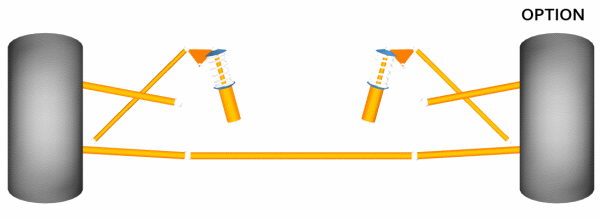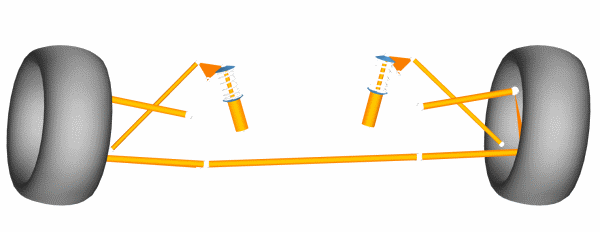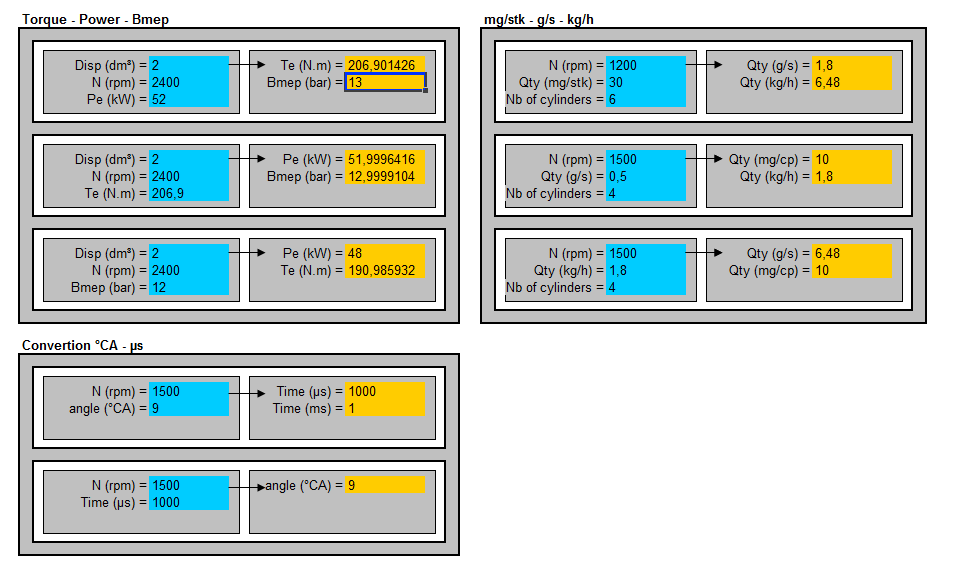To make a car go faster around a track, there are a couple of things we can do that generally will improve lap times. We can, lower weight, increase engine power, increase downforce, reduce drag, increase tire grip. Unfortunately all these changes typically come with downsides, for example:
- Lower weight – decreased durability, more expensive materials/processes
- Increased engine power – increased energy consumption, more difficult to drive
- More downforce – usually comes at the cost of more drag
- Less drag – usually comes at the cost of less downforce
- Better tires – stickier tires usually wear out faster
To improve performance we will always have to do some trade-off. In endurance racing for example, having more engine power would reduce lap time but increase fuel consumption – which in turn would require more frequent pit stops (lap time simulation software OptimumLap could for example be used to determine these relationships).
Another area which is filled with trade-offs is suspension kinematics. Whether it’s about designing a new suspension or setting up an existing design, virtually every decision will be a trade-off. Should my roll center be low to slow down the chassis response, or high to speed up the chassis response? Should I have lots of camber gain in roll or none? Will having a non-linear motion ratio help me control the ride height or will it change the balance of the car too much when the car is rolling?
It’s apparent that suspension design and setup is a minefield of compromises, but what about the performance gains? How much can be gained by optimizing a suspension design?
In this example we are going to look at a front suspension for a generic race car. The car has two possible configurations for the front suspension. A baseline setting and an option setting, the latter lowers the inboard pickup points for the upper control arms about 20 mm (3/4 in).
The baseline and option design are shown in this animation. In the option design, the upper control arms inboard points have been moved down 20 mm.
Using OptimumKinematics, these two kinematics settings are simulated for typical low speed corner. In the middle of the corner, the car will be rolling and steering. The animation below shows the two designs in the mid-corner state. The observant reader will notice how the camber angle of the tires is slightly different between the two designs. The Option design results in slightly more negative camber for the outside tire (about 0.25 degree more negative camber on the outside tire and 0.25 degree more positive camber on the inside).
The two designs are shown at the mid-corner state. The small change in camber angle between the baseline and option can be seen.
By using tire data and tire models, the effect this change in camber will have on grip can be calculated. Without going into details, the more favorable camber angles result in a 2.1% increase of lateral grip in the middle of the corner. This effectively means that for the low-speed corner we looked at in this example, the car can go about 1 km/h (0.6 mph) faster (94 km/h instead of 93 km/h). The only difference between these two designs was moving two pickup points down about 20 mm.
This is just one example of how kinematics can be used to improve performance; but what we haven’t covered is what other effects moving the pickup points will have. There are a number of trade-offs we have to consider.
Source: OptimumG
Charlie Constant opinion:
Using suspension kinematics to improve car performance is the first fundamental step when designing a suspension. We also realize that having tire data is essential to develop a suspension. Of course, this is just an example among a multiple of pickup points that engineers can use to change car handling. Then, suspension compliance has to be taken into account to know camber gain for example when cornering. But one thing at a time!























A promotion.
But good explanation.
Thank You
? Does this suspension give you a soft drive or hard drive I ls the car bouncy over bumpbs or hard or is it springy when driving thank you colette doherty
As it is designed for tracks, this kind of suspension is always hard in order for the wheels to be in contact with the track at any time.